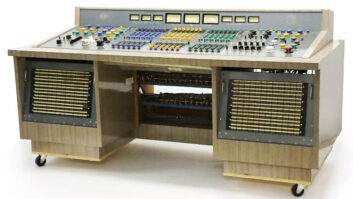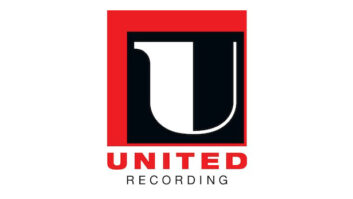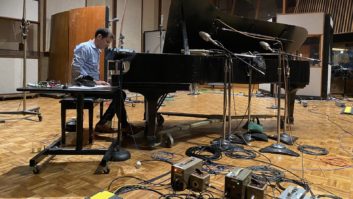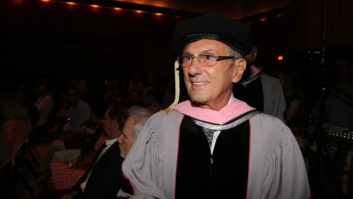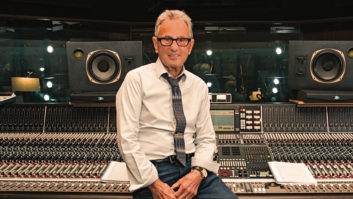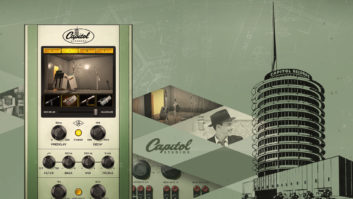If you check the semi-authoritative online All Music Guide (allmusic.com) listing under “Frank Sinatra” and scroll way down to “Compilations, Boxes,” you’ll find a whopping 318 entries, encompassing everything from standard greatest hits collections to various “theme” albums (Christmas songs, Broadway show tunes, songs for lovers, young Sinatra, blues, etc.) to exhaustive box sets covering the singer’s entire output for different labels. The Columbia Years consists of 285 tracks cut between 1943 and 1952, spread over 12 CDs; The Capitol Years (1953 to 1961) boasts 272 tracks on 21 CDs. But it’s fair to say that none of those boxes and repackagings were quite as challenging to put together as this year’s Frank Sinatra in Hollywood (1940-1964), a six-CD, 160-track set put out by Reprise (Sinatra’s own label originally) that compiles nearly every song The Voice recorded for films, both well-known and obscure. It includes tunes from many musicals, of course, including Anchors Aweigh, It Happened in Brooklyn, On the Town, Guys and Dolls, Pal Joey, Can-Can, Robin and the Seven Hoods and many more. But there are also numerous songs from films — dramas and comedies — Sinatra appeared in that were not musicals, but for which he provided a new song or two, as well as some from films he didn’t appear in at all but sang on the soundtrack.
Sprinkled among the songs — which are presented chronologically — are occasional promotional spots for the films, as well as snippets of interviews, Sinatra’s Best Supporting Actor Oscar acceptance speech (for From Here to Eternity, 1953), a few outtakes and other rarities. Did you know that in 1954, Sinatra lent his voice to an unreleased animated film version of Finian’s Rainbow that found the singer paired with such notable jazzbos as Louis Armstrong, Ella Fitzgerald, Ray Brown and Oscar Peterson? Well, there are nine tracks from that “lost” production here. Other discs feature duets with greats such as Gene Kelly, Maurice Chevalier, Kathryn Grayson, Bing Crosby and his various Rat Pack buddies, as well as such unexpected delights as numbers with Jimmy Durante and Groucho Marx. There are songs by some of America’s greatest songwriters (Cole Porter, The Gershwins, Jule Styne, Sammy Cahn, Jimmy Van Heusen, Rodgers & Hart, etc.), and there are, truth be told, a few utterly forgettable songs that are for Sinatra completists only — they weren’t all gems, folks. Ninety percent of what’s on the box has never appeared on CD before, and there has never been a collection with this sort of scope. It represents one of the last unexplored frontiers of Sinatra’s career. (His multitudinous television appearances make up the other major one.) The box is lovingly packaged with a 120-page book that includes a number of fine essays and rare photographs.
The producer/masterminds of Frank Sinatra in Hollywood are two well-known Sinatra experts: Didier Deutsch is a producer and music historian who has worked on many compilations, soundtracks and cast albums through the years, including the Sinatra Columbia Years box; and Charles Granata is the author of the 1999 book Sessions With Sinatra: Frank Sinatra and the Art of Recording and has produced several smaller collections of Sinatra songs. According to Granata, the Hollywood box was seven years in the making from conception to completion. There were years spent tracking down the material from libraries, film studio vaults and private collections — finding the best source for each song — and then the difficult and time-consuming task of transferring the source material to digital media, cleaning them sonically and, in some cases, remixing songs from primitive multitrack recordings.
“We didn’t want to just have a bunch of scenes from the films [on the box],” Deutsch says. “We didn’t want sound effects and dialog; we wanted original recordings before mixdown, and I’d say about 95 percent is that. There were a couple of tracks where we had to rely on the optical track because that’s all we had. The problem you encounter with the optical tracks is when you have a scene where Frank Sinatra is singing in a nightclub, the camera might switch to two people talking, and all of a sudden, the music behind it dips; you can’t avoid that. So we wanted to get the songs without all that, but that material is more difficult to find.”
“We were fortunate that, by and large, our original source material was in very good shape,” adds Granata. “We were using nitrate film, magnetic film, acetate discs, metal stampers and metal playback parts, and regular magnetic tape. The recordings span 1940 to 1964, so there’s a wide range of technology reflected in the box.
“When they recorded the earliest of these tracks, in the 1940s at MGM,” Granata continues, “they recorded them on nitrate film. They also created playback discs so that the performers could practice lip-synching. Before pressing the shellac playback discs, they created a stamper — a metal part that is the ‘mother.’ For a substantial number of tracks from the ’40s, we were missing the nitrate film, which had deteriorated, and in the absence of any analog transfer, we turned to either the playback disc or the stampers. In many cases, the shellac playback discs had been destroyed. Fortunately, one of our associate producers — George Feltenstein, who had worked at Turner and MGM for years — happened upon a cache of MGM stampers secreted in an attic above the studio control room. Finding those stampers helped us in two ways: First, we recovered a number of missing recordings; second, we came one generation closer to the original nitrate session recordings. Michael Feinstein — an amazing musical archivist — also stepped in and gave us complete access to his collection, which provided original source material for long-lost recordings from RKO and MGM. He also transferred all of the MGM stampers to digital for us in his home studio.”
Alas, the film studios were not, generally speaking, very careful about preserving either the raw materials that went into the making of their films or even the finished films. The nitrate in film stock was prone to deterioration and was explosively flammable. There were fatal fires in MGM’s film-storage areas in 1955 and 1960 that led to the Culver City Fire Department demanding that they purge the lot of nitrate films. At that point, Granata says, some of the engineers who understood the value of the condemned film library “transferred whatever they could to open-reel ¼-inch tape at 7½ ips. Some of those transfers were recorded at the correct level, and some were recorded at a very low level. Some of the transfers are overmodulated and distorted. Then they used bulk-erased tape, which increased the chances of having bleed-through and crosstalk from the previously recorded program — some of the reels had been marked ‘My Favorite Martian’! Though they made some effort to preserve the disintegrating nitrate film, only 1,200 analog reels survived the original session recordings for the whole MGM library. As late as the ’80s, they were still getting rid of things — they discarded all of the playback discs that had been carefully stored, and most of the stampers, except for the ones George Feltenstein discovered in 1993. Overall, the film studios have a long history of mishandling a significant portion of our cultural heritage.”
“At least a large portion of those soundtracks were salvaged,” Deutsch notes, “and in a sense, that constituted the vault of what we were looking for — the great MGM soundtracks like On the Town and Anchors Aweigh; they were there.” It should be noted, too, that other film studios were equally, if not more, cavalier about the preservation of precious audio and visual material. “With Pal Joey [a Columbia picture], all of the tapes had been destroyed; they’d been erased to put another recording on top of it,” Deutsch says with disgust in his voice. “Fortunately, we had a tape that came from a transfer of acetates that had belonged to George Sidney, the director.
“At these big companies, there’s always some guy who has no knowledge of what the history of the recordings they own is, but has a mandate to make room on the shelf so he allows these recordings to be destroyed. I’ve never understood the philosophy of hiring people who don’t know what they are doing, but that’s another story.”
Both Deutsch and Granata are highly complimentary of the quality of the original recordings that have survived, especially ones from the MGM musicals: “The MGM soundstage was the best recording studio in Hollywood; they had the best musicians and the best engineers,” Deutsch says. “Even Capitol, which I certainly don’t want to dismiss, could not really compete with MGM.”
“In many ways, the film industry was way ahead of the commercial recording industry in terms of technology in the ’40s and early ’50s,” Granata says. “A lot of people don’t know that when Sinatra was at MGM, they were already recording with discrete channels to multiple optical recorders. They didn’t do that to create a stereo film soundtrack; they did that because when they reduced the individual channels to a single mono track, they wanted the flexibility to emphasize certain portions of the orchestra. For example, if Sinatra were sitting at the piano and singing in a scene, they could raise the level of the piano if it was recorded on its own track. Generally, they would place three or four microphones across the orchestra — to get an even spread — and give the vocalist or vocal group one or two mics. Each microphone was channeled back to a separate optical film recorder; later, the sound engineers would reduce these prerecording elements — adding dialog and sound effects — to a single mono track. When we go back to these existing ‘angles,’ as the individual channels were called, we can create a stereo mix, even though the recording engineers never planned for that 50 years ago.
“When we remixed some of the ‘discrete-angle’ MGM tracks in Los Angeles, we put up the tapes and transferred them to digital. After we synched them up with timecode, we noticed that on occasion one of the tracks would ‘drift,’ because of the slight speed variations between the original optical recorders and the analog transfer machines used in the early ’60s. Once this was corrected, we used the different orchestral and vocal views to make our ‘stereo’ mix.”
Songs from the mid-’50s films The Tender Trap, Young at Heart and High Society are among those that benefited from having multitrack elements. But by this time, the studios were using magnetic “safety” film instead of unstable nitrate stock.
Film editors were already used to working with multiple sources to create soundtracks — combining different music, dialog and sound effects tracks into a single mono track, first on the nitrate stock, later on mag film. “Each medium has its own sound,” Granata says. “Optical film sounds kind of burnished and warm; it’s got a nice range, but it’s not as wide a range as a good transcription disc or magnetic tape. But it’s fairly high-quality nonetheless; it’s not usually distorted, and it doesn’t have a lot of anomalies.”
Sinatra was famously impatient as an actor — often doing re-takes only if he felt like it — and he hated having to lip synch in his films; he often groused that he’d like to be able to do live takes in front of the camera. Still, he always treated his recording sessions, whether for record or film, very seriously. “His method of recording was pretty much the same in both mediums,” Granata notes. “He didn’t do any fewer takes. He wasn’t any less careful with his vocal performance. He strove for the best performance, and he really insisted on the very best from everyone around him — the players, the engineers and himself.”
When I mention that Sinatra was notorious for being a control freak, Granata agrees, but adds, “I’ve interviewed scores of people who worked with him in the studio and I can’t think of one person who said that he was a control freak in a negative way. They all had great admiration for his ability and his innate musical sense. He’d come to a session and hear things in the orchestra that usually only a trained musician or arranger would hear. All he wanted and expected of the people he worked with was the same he expected of himself.”
Not surprisingly, getting all of the tracks on a box of this sort up to snuff sonically required a fair amount of technical work, both in the transfers and the cleanup. Using a CEDAR system at Sony Music studios in New York, Andreas Meyer did a first pass on the material, eliminating noise where possible but also understanding that, as Granata puts it, “There’s a fine line in audio restoration that you don’t want to cross. You can very easily destroy the integrity and the ambient sound of a recording with a little bit too much processing. It may sound good, but it might not be true to the original recording.
“In most cases, we were able to remove almost all of the fine surface noise with one pass through CEDAR as we were making the transfer. Later, we removed major anomalies, such as loud ticks or pops, that hadn’t been caught by the ‘decrackle’ portion of the CEDAR system. We were able to go in further and excise those noises on a case-by-case basis. With few exceptions, the recordings didn’t require much in the way of processing. Our mastering engineer did a fabulous job of smoothing everything out in the end, and the continuity from track to track is excellent.”
Another problem, Deutsch says, is that “some of the recordings, particularly some of the ones that had been transferred earlier [in the ’50s and ’60s] to tape had low levels, so we had to make some adjustments. When you raise the level by 10 or 15 dB, which we did in some instances, obviously you raise the level of the white noise and hiss, and this is something we had to contend with and treat.”
In a number of extreme cases, songs went through both the CEDAR and a Sonic system operated by the project’s mastering engineer, Darcy Proper, who has worked with Deutsch on numerous projects over the past eight years, including the Sinatra Columbia box. “Darcy and Andreas [Meyer] went beyond the call of duty because they realized the importance of this set,” Deutsch says. “They did a magnificent job.” Meyer was also involved with the tracks that needed remixing, along with Doug Schwartz of Mulholland Music in L.A. and Sony New York’s Jen Wyler.
In the end, the producers managed to get nearly everything they wanted for the set, albeit not always in the optimum format or condition. All things considered, though, it’s a remarkable set that Sinatraphiles will certainly cherish. Asked if there were any major disappointments or regrets about the box, both Deutsch and Granata point to the same “lost” song: “Farewell Amanda,” a Cole Porter tune Sinatra sang for the film Adam’s Rib. “It was in the log at MGM, but the optical film had completely disintegrated,” Deutsch says. At one point, after the box was essentially completed, Granata believed that he had finally tracked down a copy, only to find that both sides of a recently discovered metal acetate contained the same piano track for the song, without Sinatra’s lead vocal. “That was the one that got away,” Granata says. “‘Farewell Amanda’ would have put this collection over the top.”
